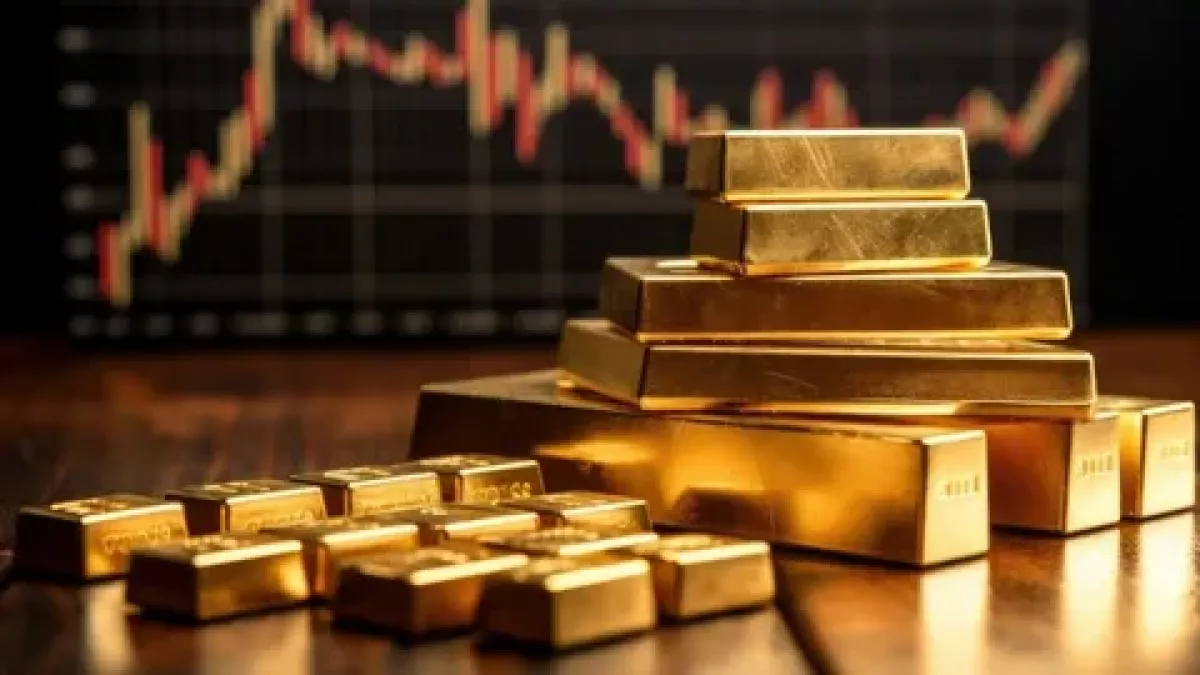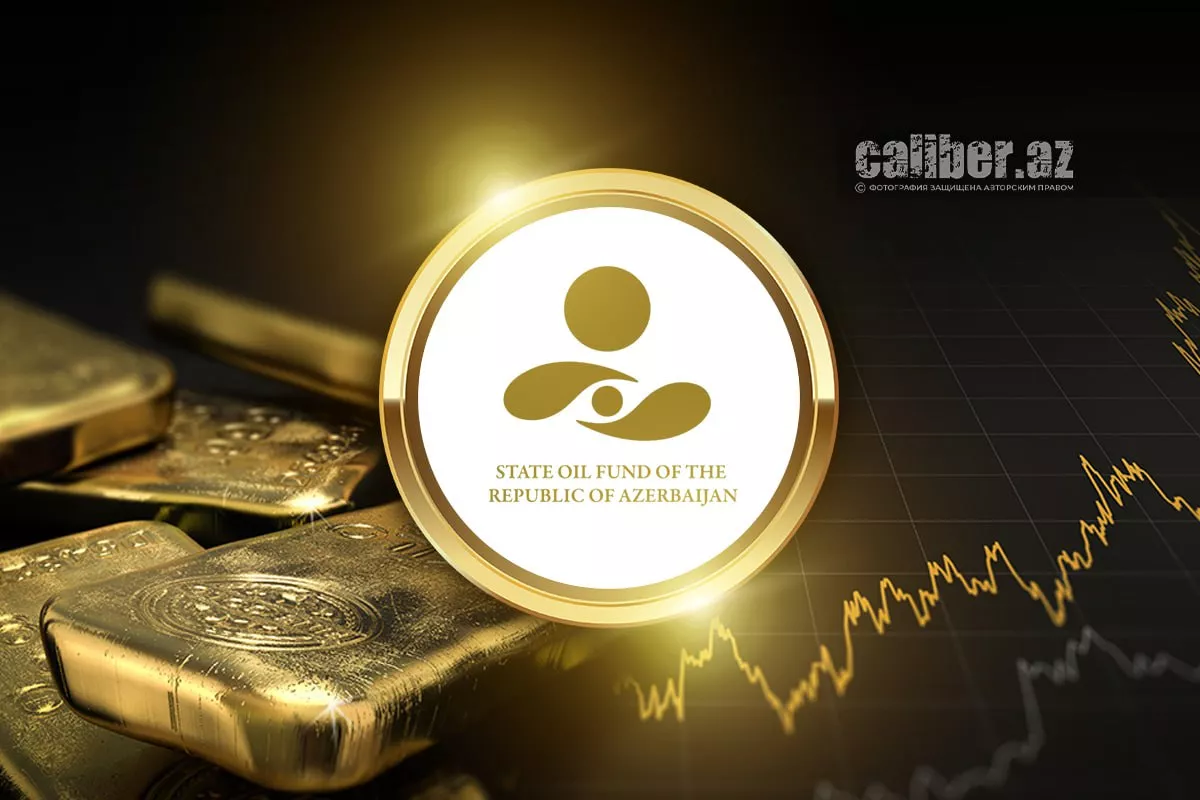Global gold rally gains momentum Azerbaijan reaps the benefits
The past year and the current one will be remembered for an unprecedented surge in gold prices. The “yellow metal” repeatedly hit historic highs last year, climbing 27%, although a strengthening U.S. dollar following the November elections temporarily slowed the trend.
Since spring, gold prices have soared further, driven by a worsening global geopolitical climate, shifts in U.S. Federal Reserve policy, and growing accumulation of precious metals by investors and central banks. Prices recently surpassed $3,690 per troy ounce, setting new records. Against this backdrop, Azerbaijan has expanded its gold exports 2.4 times over the past seven months and increased production of the precious metal by nearly 50%.
According to the Gold Demand Trends report and research by the World Gold Council (WGC), record global demand for gold in 2024 was largely driven by massive central bank purchases and an unprecedented surge in interest from private investors. Much of this heightened demand has been linked to geopolitical uncertainties, including the war in Ukraine and rising tensions in the Middle East and South Asia, which have reinforced gold’s status as a safe-haven asset.
Experts note that key economic factors influencing the precious metals market last year included the start of a monetary easing cycle by the U.S. Federal Reserve and other major financial regulators, who signalled plans to lower interest rates. Traditionally, gold prices move inversely to the U.S. dollar: under monetary easing, rising global currency supply and falling Treasury yields tend to boost demand for the “yellow metal.”
Meanwhile, with Donald Trump’s return to the White House, a new phase of the U.S. trade war with China, India, and the EU emerged, including the introduction of mutual tariffs. These developments further fuelled demand, pushing gold prices to record highs.
The trends described earlier have gained renewed momentum since the second quarter of this year, driving precious metal prices higher on global exchanges. On September 9, gold broke yet another record, exceeding $3,650 per troy ounce (31.1 grams) in the spot market, while December futures traded at $3,690 and above.
According to Bloomberg experts, this reflects market confidence that the U.S. Federal Reserve will cut its key interest rate at the September meeting, with at least one more reduction expected before year-end. On September 11, gold prices eased slightly but remained near record highs. Revised U.S. data on employment, producer prices, and consumer inflation for previous months are also due this week, which could influence market movements.
Unexpectedly weak U.S. employment figures for August, released on 5 September, further strengthened hopes that the Fed will lower the base rate at its upcoming meeting on 17 September. Currently, the key rate stands at 4.25–4.5%, and according to CME’s FedWatch tool, the market assigns a significant probability to a reduction of 0.25–0.5 percentage points.
Gold’s investment appeal rises when interest rates fall, as the metal itself does not yield interest. These developments will largely determine whether gold continues its upward trajectory, having already surged 40% since the start of 2025.

The high likelihood of the “gold rally” continuing is confirmed by the recently published data from Fitch Ratings, which also underscores gold’s status as a “safe-haven asset” for risk hedging. “Further increases in the geopolitical premium due to gold’s safe-haven status support our higher assumptions for 2025–2026 and mid-cycle prices. Concerns over a weaker US dollar have increased inflows into gold investments, driving record prices,” the Fitch Ratings report states.
Meanwhile, analysts at ANZ Group have raised their forecast for the gold price by the end of 2025 to $3,800 per ounce and do not rule out the possibility of it reaching $4,000 by mid-2026 if strong investment demand persists. Goldman Sachs analysts, in their base-case forecast, expect gold to rise to $4,000 per ounce by mid-2026, while in a “high-risk” scenario, the price could reach $4,500. If just 1% of the private U.S. Treasury bond market were redirected into gold, the price could jump to nearly $5,000.
According to Bloomberg estimates, gold has become one of the most profitable commodity assets this year. In addition to the Federal Reserve’s policies and the weakening of the U.S. dollar, another driver of growth has been the active purchases of the “yellow” metal by central banks.
“Central banks continued their strong interest for gold in January with reported net purchases of 18t. The sustained buying highlights the strategic importance of gold in official reserves, particularly as central banks navigate heightened geopolitical risks,” noted Marissa Salim, an analyst at the World Gold Council, earlier this year.
Looking ahead, it is expected that the share of precious metals in the reserves of global central banks and sovereign wealth funds will surpass that of the euro, positioning gold as the second-largest reserve asset after the U.S. dollar.

This trend is also evident in Azerbaijan, where by the beginning of this year the share of gold in the total portfolio of the State Oil Fund of Azerbaijan (SOFAZ) increased from 14.8% to 28.8%. Considering the high risks to the investment portfolio due to negative developments in global financial markets, SOFAZ had already raised its gold allocation from 13.1% to 13.9% of total assets in 2022. By the beginning of 2023, around 101.8 tonnes of gold had been reserved, and by the end of the third quarter of last year, over 25 tonnes of gold had been purchased.
Investments in gold allow hedging against risks from currency depreciation and fluctuations in securities prices. Overall, SOFAZ’s investments in the “yellow” metal exceeded 21 billion Azerbaijani manats ($12.3 billion) at the beginning of 2025. “By mid-2025, the total volume of gold in SOFAZ’s assets reached the level planned in the original strategy, amounting to 181.1 tonnes,” the fund stated in a report published in July.
Current global trends are clearly encouraging Azerbaijani producers—both the state-owned AzerGold and private Anglo Asian Mining—to boost gold production and exports. Gold has traditionally ranked among the country’s top non-oil exports; last year, it was the third-largest export by volume, after tomatoes and raw cotton.
According to the State Statistical Committee, Azerbaijan produced approximately 2.6 tonnes of gold from January to November 2024, marking a 2.4% increase over the previous year. This growth trend is expected to continue in 2025. From January to July 2025 alone, nearly 1.863 tonnes of gold were extracted, representing a 49.2% increase compared with the same period last year.
The lion’s share of gold concentrate produced in Azerbaijan is sent to Switzerland for refining and then sold abroad. According to updated data from the Export Review by the Center for Analysis of Economic Reforms and Communications (CAERC), gold exports from Azerbaijan amounted to $178.7 million over the first seven months of this year, 2.4 times higher than the same period last year.
In the foreseeable future, Azerbaijan’s revenues from the export of gold, silver, and copper are expected to increase significantly, driven both by the projected rise in global prices for these metals and by domestic mining companies’ plans to develop new ore deposits and expand production.








